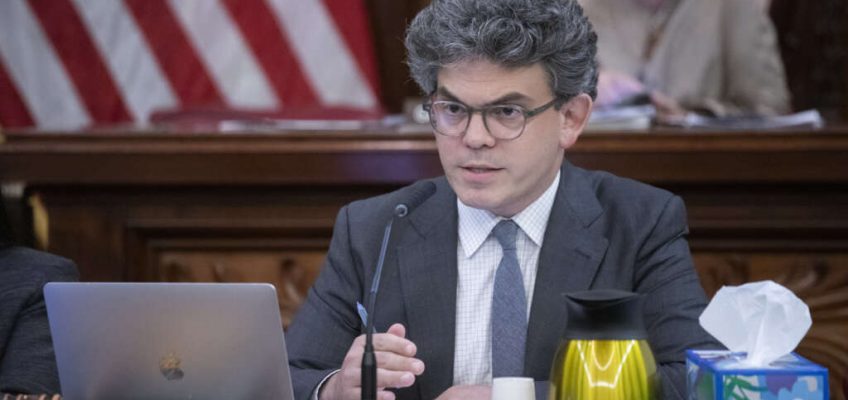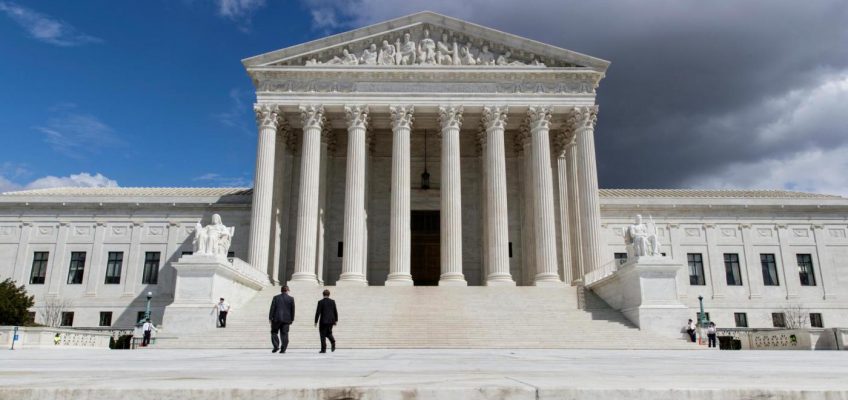The Adams administration declined to send agency representatives to two City Council hearings, inflaming councilmembers who hoped to get answers about the administration’s response to Trump’s budget cuts and a proposed housing project in the Bronx.
“Millions of New Yorkers are going to lose their health care and are going to go hungry and the Adams administration’s response is to stick their head in the sand,” City Councilmember Lincoln Restler said at Monday’s hearing. (John McCarten/NYC Council Media Unit)
The feud between City Hall and the City Council reached new heights this week, as the Adams administration declined to send agency representatives to two City Council hearings, inflaming councilmembers who hoped to get answers about the administration’s response to Trump’s budget cuts and a proposed housing project in the Bronx.
Thursday, NYC’s Health and Hospitals (H+H) officials were due to testify in support of their “Just Home” project that would build 58 units of housing for formerly incarcerated New Yorkers with significant health needs. The controversial project already went through years of public review and local resistance.
In an unusual move for a land use applicant, H+H delivered a letter to councilmembers Thursday saying the administration was now “actively reviewing” the project, which was slated for a building on the Jacobi Hospital campus. The Daily News reported that City Hall pulled its support for Just Home earlier this week, an abrupt reversal from even a month ago, when H+H said in a press release that it expected to break ground “in the next year.”
The livestream of Monday’s oversight hearing on federal budget cuts. (Screenshot)
“This is the second time this week that the city is being represented by empty chairs in this chamber,” said Councilmember Justin Brannan, before crumpling up the note.
Administration officials also declined to attend Monday’s oversight hearing on how federal cuts will affect New York City.
“The Adams administration has always taken decisive action whenever federal funds were reduced or at risk under both the current and previous federal administrations,” a spokesperson for City Hall told City Limits when asked about the absences.
“Our full written testimony will be submitted for the record, outlining in detail the steps we are taking to safeguard the city’s future. But let’s be clear: hours of hearings staged for political gain, without real purpose or impact, are a waste of taxpayer dollars and do a disservice to our constituents,” they added.
A spokesperson for City Hall pointed out that Diane Savino and Tiffany Raspberry, two Adams administration officials, did testify later in the hearing on Just Home. They said they tried to reschedule the hearing.
“Asking to change a hearing 24 hours before a hearing that was scheduled three weeks earlier, It just shows that this is all some sort of backroom deal,” said Brannan.
Before Monday’s hearing, tenants rallied outside City Hall to call attention to Medicaid cuts and expiring funding for emergency housing vouchers under the Trump administration.
“The big, beautiful bill is the single most devastating piece of legislation for the people of New York City in decades, and it is going to have enormous budgetary consequences by creating multi-billion dollar holes in the state and city budget,” said Councilmember Lincoln Restler, the governmental operations committee chair.
“And tragically, millions of New Yorkers are going to lose their health care and are going to go hungry and the Adams administration’s response is to stick their head in the sand.”
Here’s what else happened in housing this week—
ICYMI, from City Limits:
A contentious plan to demolish and rebuild NYCHA’s Fulton and Elliott-Chelsea Houses is moving ahead, with 120 households asked to move this fall to make way for construction. A number of those being relocated are seniors wary of the incoming changes, and what it means for their community ties.
“Think of New York not as an undifferentiated mass of buildings, but as a collective of people who add layers of depth to the story,” says Asad Dandia. Learn more about his neighborhood walking tours of the city.
There are dozens of vacant or underutilized lots along the Bronx River waterfront, and you can weigh in now on what they should be used for.
International students attending school in New York City face a sometimes unexpected hurdle to finding an apartment here: the need for a guarantor.
ICYMI, from other local newsrooms:
The head of a Queens-based construction company was sentenced to four years in prison for allegedly overcharging the city and submitting fake invoices for work related to homeless shelters, according to Gothamist.
A much-delayed vote on the future of the Brooklyn Marine Terminal in Red Hook, where officials are planning thousands of new apartments and other changes, is expected to take place Monday, The City reports.
Community advisory groups shot down developers’ bids to build casinos in Times Square and the west side of Manhattan, according to the New York Times.
“We’ll be looking to work closely with Mayor Mamdani, if he is the mayor on Nov. 4,” Jim Whelan, who heads the Real Estate Board of New York, told Crain’s.
Speaking of Zohran Mamdani: a new political action committee is looking to stir up support for the assemblymember and mayoral candidate among Black homeowners, City and State reports.
The post Adams Admin No-Shows at City Council Hearings, and What Else Happened This Week in Housing appeared first on City Limits.




